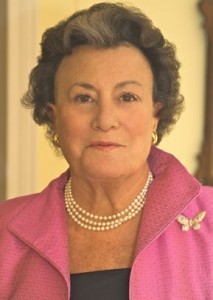Has Progress for Women in the Boardroom Stalled?

The good news is that there are now 18 women CEOs running Fortune 500 companies, up from 12 in 2011 and 15 in 2009. That means that a groundbreaking 3.6% of Fortune 500 CEOs are women. Yay!
To get a feel for whether this is part of a real shift, or just a temporary blip in this round of CEO musical chairs, I spoke with Susan Stautberg, a founder of Women Corporate Directors (WCD), a global organization of women on corporate boards. I was curious to get her perspective on the state of women in the boardroom. Has our progress stalled in the last few years of the economic recession? What is the outlook for women leaders who want to join the exclusive ranks of being a board member?
The Seven-Year Stall
The last few years have not been kind to women in the boardroom. In troubled times, boards have closed ranks. Instead of bringing on new board members, many boards elected to extend the age range so that existing board members could stay on. As Catalyst’s 2012 census reported, there has been seven consecutive years of no growth in the female representation in Fortune 500 boardrooms. The number has been stuck at 16.6%. Only 3.3% of corporate board seats are held by minority women. And more than 67% of Fortune 500 companies have no minority women on their corporate boards.
Despite the gloomy statistics, Stautberg believed that change is in the air. With the economy slowly on the path to recovery, and an increasing public (and government) demand for corporate board accountability, she predicted that boards would soon have to bring on the best person, rather than a best friend.
The Asian Influence
One trend that gives Stautberg great optimism for women, especially Asian American women, is the growing influence of Asian economies on the world stage. As more US and multinational companies expand in Asia, they will need to better understand the Asian consumers and markets. In fact, WCD’s expansion in Asia may be a canary in the coal mine. There are now 19 WCD chapters in Asia, with the Philippines chapter opening in Manila this Spring. With over 325 members in these chapters, WCD is actively organizing dinners and events in Asia.
Asian American women could serve as a valuable bridge for US companies looking to expand in Asia. Their cultural knowledge and background – combined with their familiarity with US practices – could provide unique insight to a corporate board in a way that other board members might not.
The Challenge for Asian American Women
So why aren’t there more Asian American women on corporate boards? Stautberg observed that women from an Asian culture – even US-born ones – tended to not speak up as much in meetings. We also seemed reluctant to “self-promote”, or talk about our achievements. As it turns out, speaking up in meetings, and letting others know about our results are essential to advancing in the US corporate workplace. If you have ambitions to get onto a corporate board, you had better beef up on these skills. Putting yourself out there is key to getting noticed and clinching that coveted invitation to join a corporate board.
Stautberg pointed out that this did not mean only extraverts could be board members. In fact, introverts are very good at listening, absorbing information, and can be very creative. However, they are hampered sometimes by their own nervousness about speaking up. Or their body language may not project the self-confidence that is valued in the US.
Change is in the Air?
After speaking with Stautberg, I came away optimistic. Yet, I couldn’t help but wonder how long her predictions might take to play out. Yes, Asian economies are becoming increasingly important to US companies – but this is not new. Further, with the level of female representation stuck at 16% for the last 7 years, what is the catalyst that will propel corporate boards to suddenly realize that they need new blood in the boardroom, let alone Asian American talent?
Despite my lingering questions, I can only be assured by Stautberg’s steadfast confidence that change is in the air. After all, she is much closer to these corporate boards than I am. Did I mention that Stautberg is also President of PartnerCom Corp, which assembles and manages Advisory Boards for businesses, governments, and non-profits? If anyone knows what boards are looking for these days, it’s Stautberg. With that in mind, dear reader, I encourage you to get out there and “lean in”!
[Update 8/24/13: WCD is holding an exclusive conference in Singapore, September 11-12th, to explore trends on the minds of Asian directors – as well as a call to action and blueprint to help break down the structural, cultural and strategic obstacles to create diverse boards. Participation in this event is by invitation-only for WCD members and invited women directors. If you have suggestions for women directors to invite to the Asia Institute, please send their professional bio, highlighting their Board of Director experience, to asia@womencorporatedirectors.







